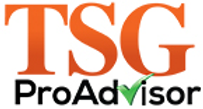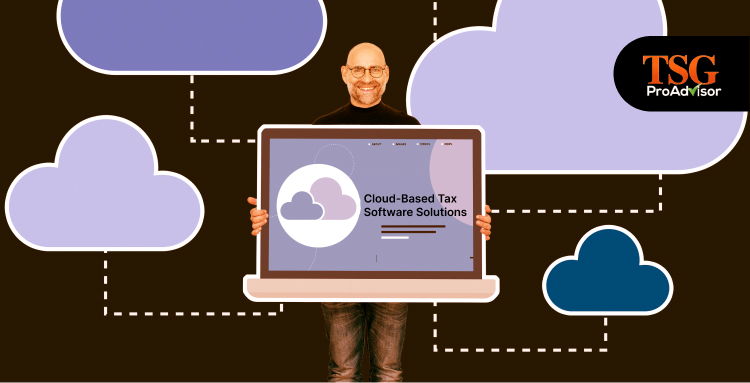As a tax professional, you understand that to stay ahead of the curve, embracing tools that boost efficiency, accuracy, and collaboration is key. Cloud-based solutions not only streamline the tax filing process but also come packed with features that adapt to your ever-evolving needs.
You can access your files from anywhere, at any time, with just a few clicks. With cloud-based tax software, you’re not just tidying up your workflow; you’re minimizing the chances of errors and enhancing communication with your clients—all while keeping sensitive information secure. So, let’s dive into the many benefits of cloud-based tax software solutions and discover how they can take your practice to the next level.
1) Unlocking Accessibility: Work Anytime, Anywhere with Cloud Software
Did you know your office can be wherever you choose to be—be it a cozy café, your living room, or even a beach with a view? This is now a reality, thanks to cloud-based solutions. These platforms not only offer flexibility but also enhance productivity for tax professionals, making the entire process smoother and more efficient.
-
Access tax documents and software from anywhere, anytime.
Cloud-hosted tax software allows users to access their applications and documents from any device with an internet connection. This means you can work from home, a café, or even while traveling, ensuring that you’re never tied to a physical office. Providers manage all software updates, ensuring that users have the latest features. Leading cloud solutions implement advanced security measures, including encryption, multi-factor authentication, and regular backups. This ensures that sensitive tax information remains protected against unauthorized access and data loss. Even you can opt for real-time collaboration. This is both suitable and cost-effective.
-
Ideal for remote work and flexible schedules.
With cloud computing, the traditional 9-to-5 grind is rapidly becoming a thing of the past. Employees now crave flexibility in their work schedules, and companies are adapting to meet these demands. A survey revealed that 99% of remote workers would prefer to continue working remotely for the rest of their careers, highlighting a significant shift in workplace culture.
Therefore, the days of fixed office hours and desktop dependency are gone. Cloud software adapts to your unique schedule, allowing you to manage taxes on your own terms, whether you’re clocking in from home or catching up on the go.
2) Enhancing Team Collaboration with Cloud Tax Solutions
 In today’s fast-paced work environment, seamless teamwork is essential, and cloud-based tax solutions make it easier than ever. Team members can effortlessly collaborate on tax returns, client records, or financial data, while clients receive the updates they need without delay. Here’s how it works:
In today’s fast-paced work environment, seamless teamwork is essential, and cloud-based tax solutions make it easier than ever. Team members can effortlessly collaborate on tax returns, client records, or financial data, while clients receive the updates they need without delay. Here’s how it works:
-
Real-Time Collaboration:
One of the standout features of these platforms is real-time collaboration. Real-time collaboration features allow teams to work together seamlessly. Cloud tax software allows multiple users to work on the same documents simultaneously. This feature enhances teamwork by enabling tax preparers to review, edit, and finalize returns in real time, reducing the back-and-forth typically associated with document sharing.
-
Easy sharing of documents and data among staff and clients:
These platforms facilitate effortless sharing of documents and data among staff and clients. For instance, tax professionals can upload necessary files for client review or request additional information directly within the platform, streamlining communication and improving client engagement.
By creating a centralized source of all tax-related documents, cloud solutions eliminate the confusion that can arise from scattered files among the staff. This centralization allows team members to access the most current versions of documents from anywhere, ensuring everyone is on the same page. It keeps you hassle-free if you’re a tax professional trying to balance work and education.
3) Stay Compliant: The Importance of Automatic Updates in Tax Software
Cloud-based tax software continuously adapts to the latest tax codes, regulations, and compliance standards, ensuring you’re always working with current information.
-
Automatic updates ensure compliance with the latest tax laws and regulations
Automatic updates are like having a personal assistant who keeps you informed about the latest tax laws and regulations. Tax codes are constantly evolving, and keeping track of these changes can be overwhelming. With software that automatically updates, you can rest assured that your tax calculations and filings are based on the most updated information.
This feature helps you avoid costly penalties that can arise from outdated practices or misinterpretations of the law. You’re not gonna receive any letter from the IRS that tells you you owe them a hefty amount. You must keep your tax software updated like you keep yourself updated with tax knowledge for maximum efficiency.
-
Reduces the risk of errors due to outdated information
Outdated information is one of the leading causes of tax errors. When your software is not up-to-date, there’s a higher chance of making mistakes during calculations or filings, which can lead to significant financial repercussions. Automatic updates minimize this risk by ensuring that all data reflects the latest regulations, allowing you to focus on your core business activities rather than worrying about compliance issues.
4) Cost Savings: How Cloud Solutions Reduce IT Expenses
 When it comes to IT expenses, cloud solutions are reshaping business management, leading to significant cost savings. Here’s a closer look at how these technologies can reduce IT costs effectively:
When it comes to IT expenses, cloud solutions are reshaping business management, leading to significant cost savings. Here’s a closer look at how these technologies can reduce IT costs effectively:
-
Lower IT costs
One of the most compelling advantages is that there’s no need for extensive infrastructure or maintenance. Traditional IT setups require significant investments in physical hardware, data centers, and ongoing maintenance. With cloud solutions, businesses can shift from a capital expenditure (CapEx) model to an operational expenditure (OpEx) model, meaning they only pay for what they use. For example, a small business can access a service like AWS without the hefty price tag of purchasing and maintaining its servers.
-
Affordable Subscription Models
Cloud services often operate on subscription models, which can be more affordable than traditional software purchases. Instead of paying a large sum upfront for software licenses, businesses can opt for monthly or annual subscriptions that align with their budget and cash flow.
5) Protecting Your Data: Security Features of Cloud Tax Software
Protecting your data is a top priority, especially when it comes to sensitive information like tax documents. Here’s how this tax software enhances data protection:
-
Robust Security Measures
Cloud providers typically offer robust security measures, protecting sensitive data. For instance, many platforms utilize 256-bit AES encryption to protect files during upload and transfer, ensuring that unauthorized access is prevented at every stage.
Moreover, multi-factor authentication adds an extra layer of security, requiring users to verify their identity through multiple methods before accessing data. This combination of encryption and authentication helps keep your tax information secure from potential breaches or cyber threats.
-
Data backup and recovery
Another advanced feature of cloud tax software is its data backup and recovery capabilities. Many providers offer automatic daily backups, which protect your data from loss due to hardware failures or user errors. For example, CheckMark’s Cloud Backup Add-On allows users to back up their data multiple times a day and restore it quickly whenever needed. This means that even in the event of a disaster, you can recover your files with minimal downtime.
6) Tax Preparation Processes with Automation
 Automation in tax preparation processes is a game-changer for efficiency and accuracy. Here’s how:
Automation in tax preparation processes is a game-changer for efficiency and accuracy. Here’s how:
- Automation features reduce manual data entry and errors, speeding up tax preparation. One of the most significant benefits of automation is its ability to reduce manual data entry. Traditional tax preparation often involves tedious inputting of data from various sources, which can lead to human errors. Automated solutions streamline this process by extracting data directly from forms, invoices, and other documents.
- Integration with accounting software simplifies data import/export. Cloud tax solutions often come equipped with APIs that allow seamless data import and export between systems. This means that financial data can be transferred effortlessly from accounting software to tax preparation tools without the need for manual intervention. Less manual interaction means less human error.
7) Scalability: Adapting Cloud Tax Software to Your Growing Firm
Scalability is a key advantage of cloud tax software, especially for expanding firms. Thinking of growing the firm without breaking the bank? Here’s how these solutions flex to meet your business needs without any extra investments:
-
Easily Scale with Business Growth
As your business expands, you can easily scale the software to manage increased data and transactions. This means no need for extensive infrastructure upgrades or additional investments in new hardware.
For instance, many cloud solutions allow you to add users and features with just a few clicks, ensuring that your tax processes remain efficient and effective as your client base grows.
-
Flexibility to add features or users as needed
You can add new features or additional users as needed, allowing your firm to adapt quickly to changing demands. This is particularly useful during peak tax seasons when you may need to onboard temporary staff or integrate new functionalities to handle complex tax scenarios.
This ability enhances collaboration as you can grant clients real-time access to their information. It provides transparency for everyone involved.
Embrace Cloud Solutions for Tax Efficiency with TSG Pro Advisor
Cloud-based tax software brings real, practical benefits to tax preparation, from enhanced security and automation to seamless scalability and real-time collaboration. These tools empower firms to work more efficiently, minimize errors, and adapt to growth without significant costs.
By embracing these innovative technologies, firms can position themselves for success, allowing them to focus on delivering exceptional service to clients as well as taking them into the advanced work environment. I hope you find the information helpful. However, if you need further assistance, reach out to TSG Pro Advisor.


